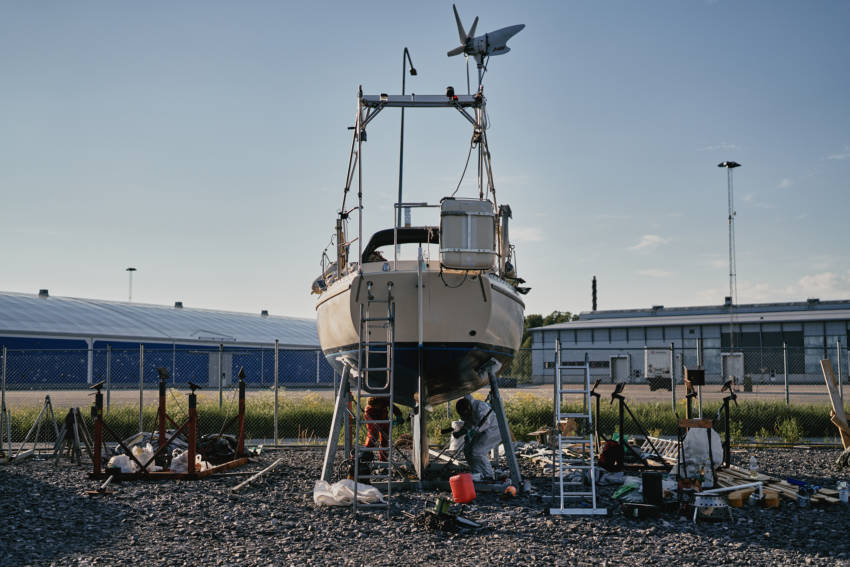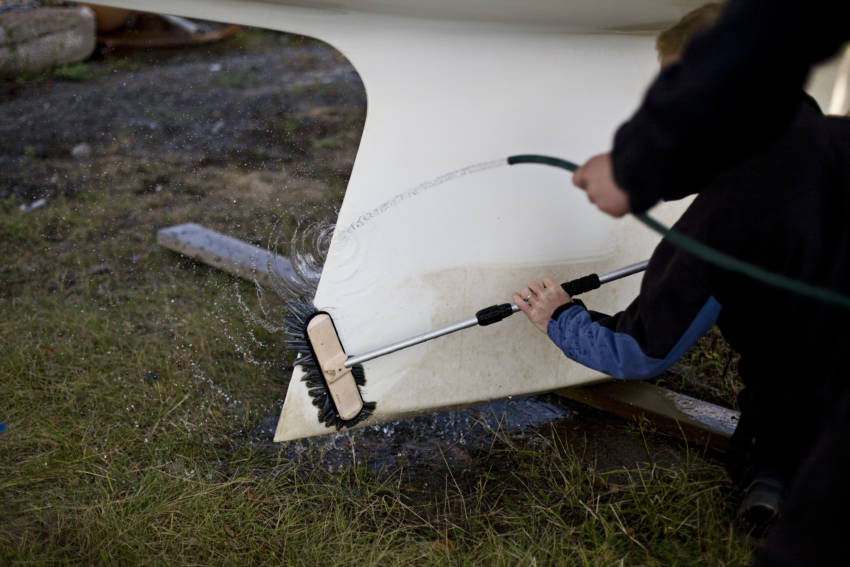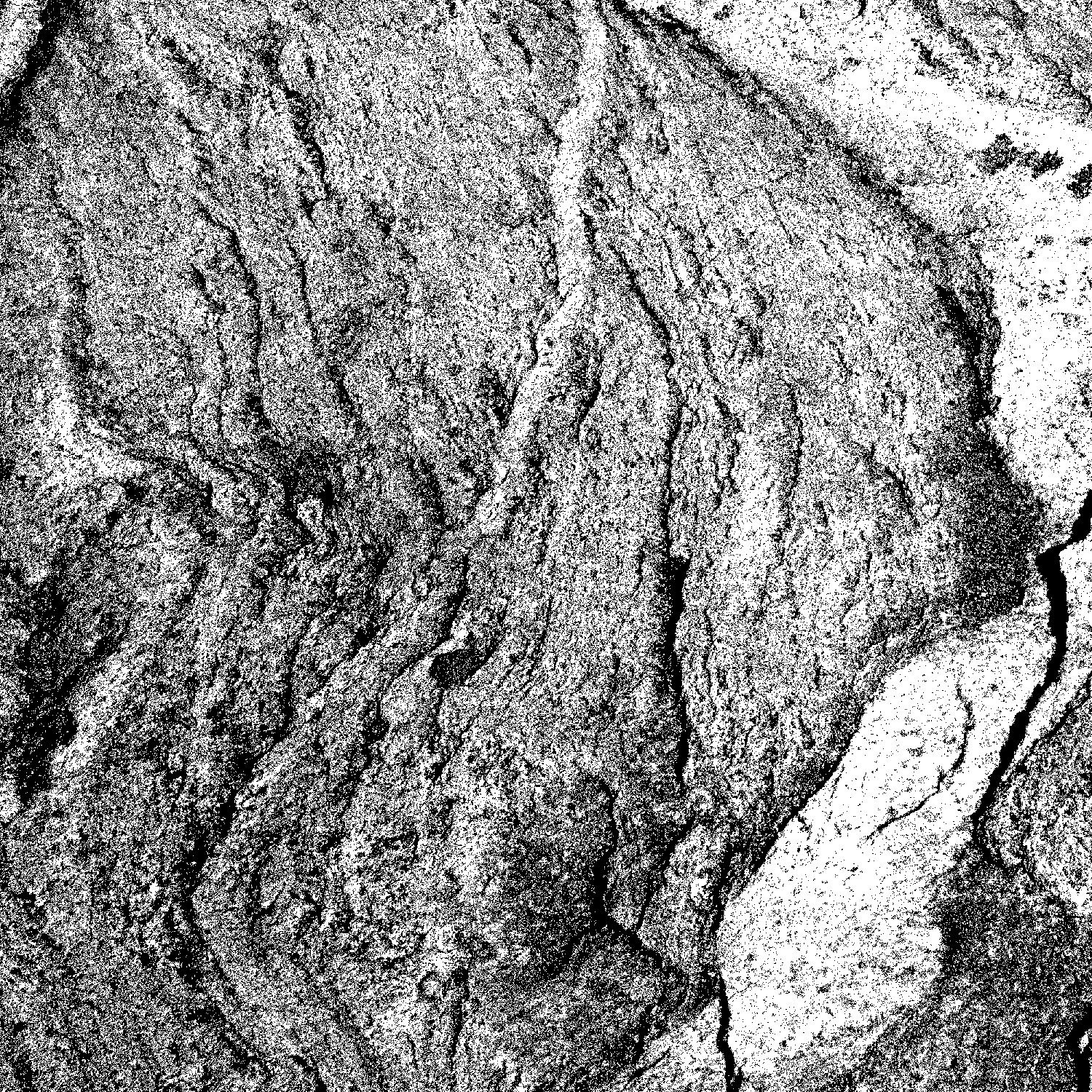Antifouling paints can be entirely replaced by mechanical methods

The sale and marketing of antifouling products and paints for use on boat bottoms has been restricted in Finland and other EU countries due to their harmful impact on the environment and health.
Harmful antifouling products attempt to prevent barnacles, seaweed and other growth from attaching to the boat bottom. Biological growth on a boat bottom reduces speed and increases fuel consumption. The active ingredients in such products include, for example, copper, zinc and organic compounds. When these active ingredients dissolve in the water, they are naturally poisonous even to organisms other than those that they were intended to repel. Organisms in vulnerable coastal waters and harbour areas are particularly at risk.
The level of the harmful effects is further increased by the fact that emissions are largest in the spring, the best breeding time for most marine organisms, when boats are being launched into the water with their newly painted bottoms. Fortunately, there are already several alternatives to antifouling paints available, and the use of paint can be reduced by making simple practical changes.
Harmful active substances in antifouling paints
Copper compounds
- cause algae, water fleas and fish to die
- accumulate in e.g. mussels and Baltic herring
- do not break down and so they collect in the sediment
- result in an increased concentration on the sea bottom, thereby reducing the number of living organisms
Zinc compounds
- are poisonous to crustaceans and fish
- do not break down and so they collect in the sediment
Organic compounds
- are poisonous to algae and marine plant life in particular
- may reduce the amount and types of algae, even in minute concentrations
Replace antifouling paints with mechanical methods

Boat bottom washing
Having your boat bottom washed is a cost-efficient and environmentally-friendly alternative to the use of antifouling paints. Washing the bottom removes bothersome growth and barnacles from the bottom of the boat just after they attach in July−August.
The bottom can be washed using a pressure washer, at a boat washing facility, or a brush washer.
These methods for washing the bottom can only be used on unpainted boat bottoms, because the pressure and brush bristles can strip paint from the boat. Two or three washes per summer is enough to keep the bottom clean. Smaller boats can also be washed by hand using a scrubbing brush in the water or on land. A special scraper specifically intended for boat bottoms is now also available for the easy removal of growth.
Members can request that the Keep the Archipelago Tidy Association notify them by SMS message at the start of the period in which barnacles begin to attach. Simply submit your contact information through the association’s website (in Finnish)(avautuu uuteen ikkunaan, siirryt toiseen palveluun).

Boat lifting
If it is possible, your boat should be lifted from the water when it is not in use. In this case, neither painting nor cleaning is necessary, since growth will not have the chance to become attached to the bottom. The Finnish market offers boat lifts and small boat hoists that you can use to lift and store your boat when it is not in use. Smaller boats can also, if possible, be stored on a trailer in its home harbour.
Other methods developed to keep boat bottoms clean include the use of an ultrasonic antifouling system, or a brush mat onto which you lift your boat.
If you decide to paint your boat bottom, consider these factors:
- Changing the colour of the paint will enable you to see where there is a need to touch-up the paint and saves you from needing to paint the entire bottom of the boat every year.
- Painting only to the water line may be enough in some areas
- Read the instructions for use carefully and protect the surroundings properly.
- Paint should be allowed to dry in accordance with the instructions.
- Antifouling paints are unnecessary in the Bay of Bothnia or inner waters.
An updated list of permitted antifouling products is available on the website of the Finnish Safety and Chemicals Agency (TUKES)(avautuu uuteen ikkunaan, siirryt toiseen palveluun).
Did you know paint dust is considered hazardous waste?
Remember that paint dust and waste are considered hazardous waste that is harmful in terms of human health and the environment. It also contaminates the soil at the shipyard or harbour. When you sand off old paint, use a vacuum sander that collects the paint dust and place a tarp under the boat. This will make it easier for you to transport the paint dust and waste to the proper recycling bin for hazardous waste. Also remember to protect your own health by wearing a respirator or mask during the process.
